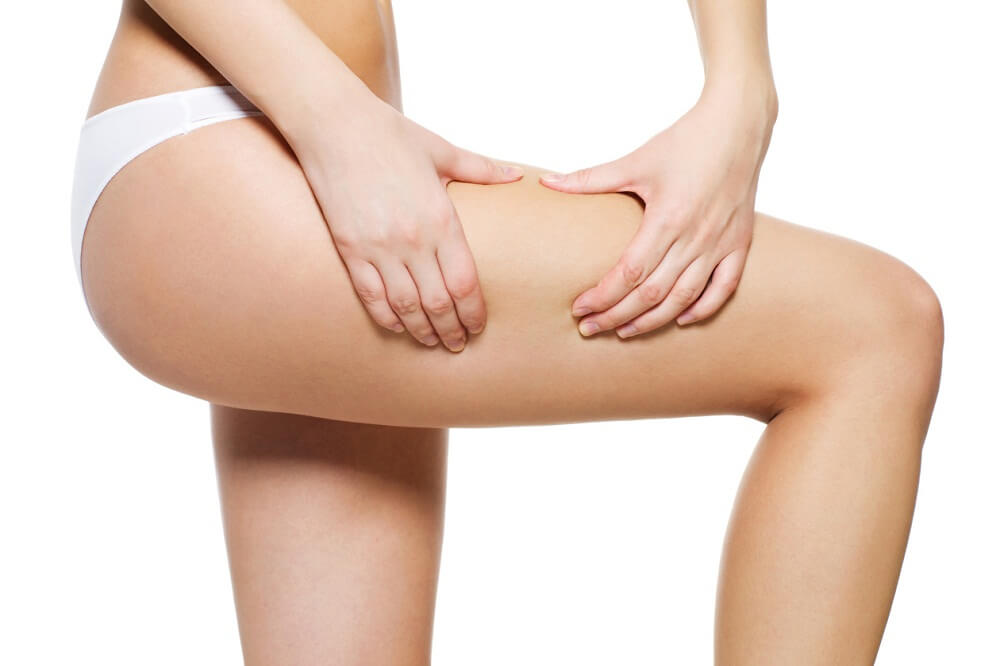How to Make a Firming Oil for Your Legs

If you want to keep your legs firm and toned, we want to be clear: there isn’t a miracle method that makes them look like this. This part of your body can be problematic. After all, this is where fat, cellulite, and other beauty problems manifest and make you uncomfortable. However, a firming oil may be of great help to you.
There are many products out there that you can use externally to reduce flabbiness. However, you need to use them together with a daily exercise routine and also follow a healthy diet.
Also, it’s good to keep in mind that there are some natural treatments. Thanks to their ingredients, they may help firm the skin tissue in this part of your body.
Read more here: The 9 Most Efficient Exercises for a Firm Butt and Legs
In this article, we want to share a homemade rosemary firming oil. It may help reduce flabbiness and poor circulation in your legs.
Are you ready to try it out?
Rosemary firming oil for your legs

This rosemary firming oil for your legs is a natural product that comes from crushing rosemary in extra virgin olive oil.
- These ingredients stand out due to their fatty acids, antioxidants, and amino acids. After being absorbed through your skin, these compounds may help reduce flabbiness and cellulite.
- Massaging them onto your skin may help improve circulation in the lower part of your body. This may reduce the appearance of varicose veins.
- This firming oil has vitamins A, C, and E. These are necessary for good collagen and elastin production in your skin.
- In addition, this firming oil is perfect for jumpstarting your lymphatic system. It promotes the removal of toxins, liquids, and other kinds of waste that affect your skin in one way or another.
- While it doesn’t help reduce flabby muscle mass, it’s a great complement for firming the skin of your legs.
- It also helps relax your tired legs. This may reduce inflammation and pain. Among other things, its essential fatty acids feed and strengthen your skin’s fibers. This is what may help reduce the appearance of stretch marks on your thighs and glutes.
How to make a rosemary firming oil
To reap the firming properties of this natural rosemary oil, all you have to do is follow a few easy steps.
You can easily buy the ingredients in a health food store or supermarket. And, if you buy commercial products, they’re much cheaper.
We suggest that you buy extra virgin olive oil. This is because the more refined versions don’t have the same nutritional quality.
Ingredients
- 8 sprigs of fresh rosemary
- 1 cup of extra virgin olive oil
Utensils
- A glass jar with a lid
- A wooden spoon
Instructions

- Wash the fresh rosemary sprigs well and put them to dry at room temperature.
- When they’re ready, cut them into several pieces and place them in a glass jar.
- Cover the rosemary with olive oil and stir with a wooden spoon.
- Seal the bottle and store it in a cool, dark place for 20 days.
- During this time, uncover the bottle every two or three days and stir the ingredients with a spoon.
- After 20 days, uncover the product, filter it with a cloth strainer, and discard the remains.
How to apply
- Put a little of this firming oil on the palms of your hands. Then, rub it on your legs with smooth, circular movements.
- Massage your legs for five to eight minutes. Press with your fingertips to get the best results.
- Be sure to let the oil absorb into your skin without rinsing it off. Let it work all night.
- Repeat this treatment two to three times per week to get good results.
Keep in mind that even though your legs will immediately feel relaxed, this oil’s firming effects don’t come from just one application. It’s important to apply it multiple times per week on a consistent basis for better results.
Don’t forget that this isn’t a miracle remedy for toning your legs. Thus, you need to complement it with a good diet and also drink water and exercise.
All cited sources were thoroughly reviewed by our team to ensure their quality, reliability, currency, and validity. The bibliography of this article was considered reliable and of academic or scientific accuracy.
- Segers, A. M., de Forteza, I. E., Conforti, F. Y., & Abulafia, J. (1985). Celulitis. Medicina Cutanea Ibero-Latino-Americana. https://doi.org/10.1016/S0212-5382(03)71862-7
- Del Carmen González Ramos, M., Galimberti, D., Montero, D. C. V., Sharon, S. S., Bollea, L. A., & Galimberti, R. L. (2015). Celulitis: tratamiento combinado con mesoterapia, láser y radiofrecuencia. Dermatologia Cosmetica, Medica y Quirurgica.
- Sasikumar, B. (2012). Rosemary. In Handbook of Herbs and Spices: Second Edition. https://doi.org/10.1533/9780857095671.452
- Calabriso, N., Scoditti, E., Pellegrino, M., & Annunziata Carluccio, M. (2014). Olive Oil. In The Mediterranean Diet: An Evidence-Based Approach. https://doi.org/10.1016/B978-0-12-407849-9.00013-0
This text is provided for informational purposes only and does not replace consultation with a professional. If in doubt, consult your specialist.








